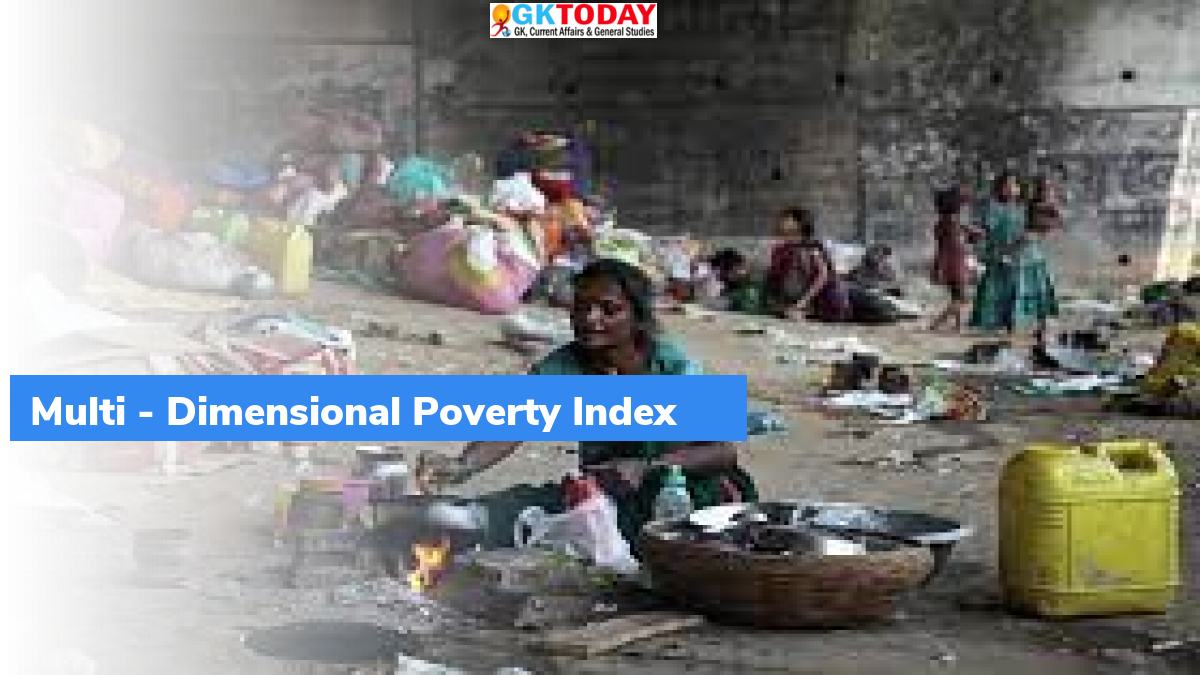Multi – Dimensional Poverty Index
In November 2021, the NITI Aayog released the first Multi Dimensional Poverty Index of India. The index measures poverty and its effect based on per capita consumption expenditure.
What are the key findings of Multi – Dimensional Poverty Index?
- Bihar has the highest proportion of people under poverty. Around 51.91% of the state population are under poverty.
- Jharkhand had the second highest number of people under poverty. Around 42.16% of population of Jharkhand are under poverty.
- Uttar Pradesh had the third highest number of people under poverty. Around 37.39% of the state population is under poverty.
How is MPI calculated?
- The MPI aims to measure poverty based on per capita consumption expenditure. The index was calculated using three main dimensions such as health, education and standard of living. These three indicators are represented by 12 other indicators such as sanitation, drinking water, school attendance, nutrition, bank accounts, housing, etc.
- The MPI used Oxford Poverty and Human Development Initiative and the United Nations Development Programme for its calculation. It is a globally accepted methodology.
What are the findings of the index on malnourishment?
Bihar has the highest number of malnourished people. It was followed by Jharkhand, Madhya Pradesh, Uttar Pradesh and Chhattisgarh. The lower number of malnourished people are in Kerala, Goa and Sikkim. 0.71% are malnourished in Kerala, 3.76% in Goa and 3.82% in Sikkim.
What are the findings of the index on Union Territories?
Among the Union Territories, Dadra and Nagar Haveli had the highest number of poor people, followed by Jammu and Kashmir, Ladakh, Daman and Diu and Chandigarh. The lowest number of poor were in Puducherry, Lakshadweep and Andaman and Nicobar Islands. In Delhi, it was 4,79%.


